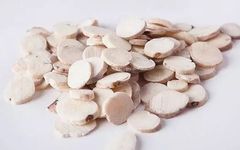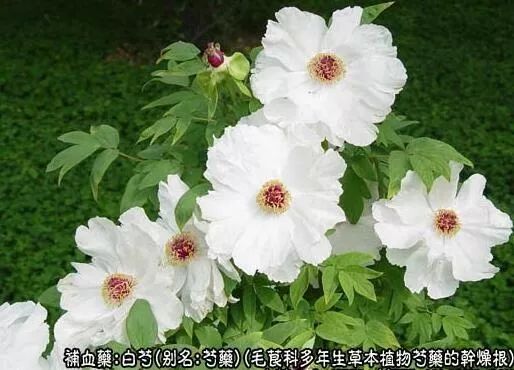
Bai Shao
Bai Shao, a name in traditional Chinese medicine, refers to the dried root of the peony plant, Paeonia lactiflora Pall. It is harvested in summer and autumn, cleaned, and the head, tail, and fine roots are removed. The root is boiled in water, the skin is removed, and then it is dried. Bai Shao is known for its efficacy in nourishing blood, regulating menstruation, astringing Yin, alleviating pain, and calming liver Yang. It is commonly used for conditions such as blood deficiency, irregular menstruation, spontaneous sweating, night sweats, flank pain, abdominal pain, limb cramps, and headaches with dizziness.
Bai Shao Images
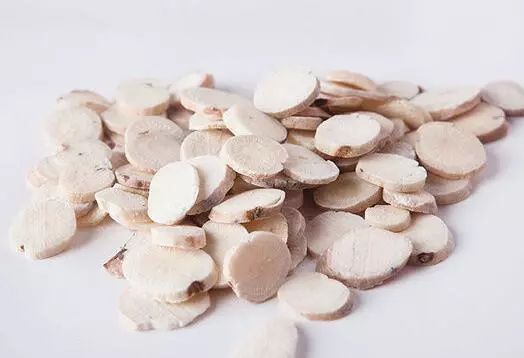
Bai Shao Images
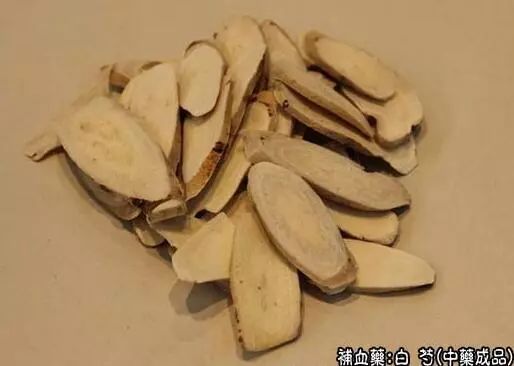
Bai Shao Images
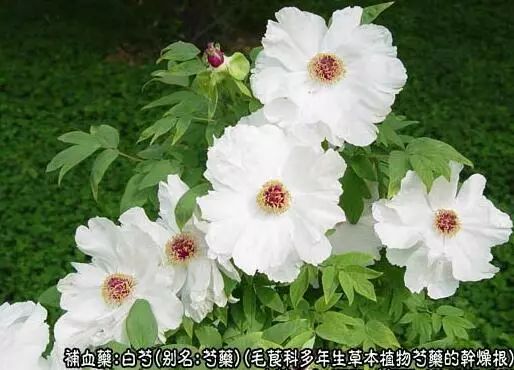
Bai Shao Images
Introduction to Bai Shao
Herb Name: Bai Shao
Pinyin: Bái Sháo
Alias: Shao Yao, Hang Shao, Hao Shao, Chuan Shao.
Source: This product is the dried root of the peony plant, Paeonia lactiflora Pall. It is harvested in summer and autumn, cleaned, and the head, tail, and fine roots are removed. The root is boiled in water, the skin is removed, and then it is dried.
Characteristics: The product is cylindrical, straight or slightly curved, with flat ends, measuring 5-18 cm in length and 1-2.5 cm in diameter. The surface is whitish or light reddish-brown, smooth or with longitudinal wrinkles and fine root marks, occasionally with remnants of brownish outer skin. It is solid, not easily broken, with a relatively flat cross-section, whitish or slightly reddish-brown, with distinct growth rings and radial rays. It has a slight aroma and a slightly bitter, sour taste.
Chemical Components: The root contains paeoniflorin, peony phenol, and paeoniflorin glycosides, with benzoic acid approximately 1.07%, volatile oil, fatty oil, resin, tannins, sugars, starch, mucilage, proteins, β-sitosterol, and triterpenes. Additionally, those from Sichuan contain an acidic substance that inhibits Staphylococcus aureus.
The flowers contain astragaloside, kaempferol 3,7-diglucoside, a large amount of gallic acid (over 10%), pyrethrin 0.13%, 13-methyl-tetradecanoic acid, β-sitosterol, and pentacosane. The leaves contain tannins.
Taste and Properties: Bitter, sour, slightly cold.
Meridians Entered: Liver and Spleen meridians.
Storage: Store in a dry place.
Contraindications: Use with caution in cases of deficiency-cold abdominal pain and diarrhea. Not suitable for use with Li Lu.
Efficacy of Bai Shao
Calms the liver and alleviates pain, nourishes blood, regulates menstruation, and astringes Yin. It is used for headaches, dizziness, flank pain, abdominal pain, limb cramps, blood deficiency, irregular menstruation, spontaneous sweating, and night sweats.
Functions of Bai Shao
1. Antispasmodic and analgesic. It has a lowering effect on muscle tension and inhibits movement in the isolated intestinal tubes of rabbits and the smooth muscles of the stomach and uterus in rats.
2. Sedative. Paeoniflorin has an inhibitory effect on the central nervous system.
3. Antibacterial. It has a significant inhibitory effect on Staphylococcus aureus and Shigella dysenteriae.
4. Antifungal. It has varying degrees of inhibitory effects on various skin fungi, including those causing tinea cruris.
Additionally, experiments have preliminarily proven that Bai Shao can inhibit gastric secretion and prevent stress-induced ulcer disease in rats; clinical observations also indicate that Bai Shao has effects in stopping sweating and promoting diuresis.
Dosage of Bai Shao
Internal use: 6-15 g. — Chinese Pharmacopoeia
Internal use: decoction, 2-4 qian; or in pills or powders. — Dictionary of Chinese Medicine
Internal use: decoction, 5-12 g; or in pills or powders. Large doses can be used at 15-30 g. — Compendium of Materia Medica
Formulas with Bai Shao
Note: The following formulas should be used under the guidance of a physician.
1. For treating flank pain in women
Four ounces of Xiang Fu (Cyperus rotundus) (two bowls of yellow vinegar, one ounce of salt, boiled until dry), Rou Gui (Cinnamon), Yan Hu Suo (Corydalis), and Bai Shao. Grind into a fine powder, take two qian each time, decoct in boiling water, and take at any time. (From Zhu’s Collection of Verified Medical Formulas Bai Shao Decoction)
2. For treating dysentery with pus and blood, urgency, and abdominal heaviness
One ounce of Bai Shao, half an ounce of Dang Gui (Angelica sinensis), half an ounce of Huang Lian (Coptis chinensis), two qian of Ping Lang (Areca catechu) and Mu Xiang (Saussurea costus); two qian of Gan Cao (Licorice) (roasted), three qian of Da Huang (Rhubarb), half an ounce of Huang Qin (Scutellaria baicalensis), and two and a half qian of Guan Gui (Cinnamon). Finely chop, take half an ounce each time, boil in two cups of water until one cup remains, and take warm after meals. (From Su Wen: Disease Mechanism and Life Preservation Bai Shao Decoction)
3. For treating abdominal pain during pregnancy
Three ounces of Dang Gui, one pound of Bai Shao, four ounces of Fu Ling (Poria), four ounces of Bai Zhu (Atractylodes macrocephala), half a pound of Zexie (Alisma), and half a pound of Xiang Fu. Grind the six ingredients into a powder. Take a small spoonful mixed with wine, three times a day. (From Jin Kui Yao Lue Bai Shao Decoction)
4. For treating postpartum abdominal pain due to blood and Qi attacking the heart
Two ounces of Bai Shao, one ounce each of Gui (Cinnamon) (remove rough skin) and Gan Cao (Licorice) (roasted). Grind the three ingredients coarsely, take three qian each time, boil in one cup of water until seven-tenths remains, strain, and take warm, regardless of time. (From Sheng Ji Zong Lu Bai Shao Decoction)
5. For treating dysmenorrhea
Two ounces of Bai Shao, eight qian of Gan Jiang (Dried Ginger). Grind into a fine powder, divide into eight packets, and take one packet daily with yellow wine during menstruation, for three consecutive weeks. (From Inner Mongolia Selected Materials on New Medical Methods of Chinese Herbal Medicine)
6. For treating chronic red and white discharge in women
Three large ounces of Bai Shao, half a large ounce of Gan Jiang. Finely chop, fry until yellow, pound and strain. Take two qian on an empty stomach with juice, twice a day. (From Guang Li Fang)
Warm Reminder:Medication should be used with caution; please follow medical advice!
Learn about Chinese herbs in just 5 minutes a day and pursue a healthy diet!
If you would like to learn about a specific Chinese herb, you can long-press and scan the QR code below to follow this account (Chinese Herbs and Healthy Diet, WeChat ID: zycydq), and then directly input the name of the herb (for example, Jin Yin Hua) in the dialogue box to query. Our database includes over 5,000 common Chinese herbs, and we welcome your suggestions. Thank you.

▲ Long press the QR code to “recognize” and follow


